 The NASA Global Hydrology Resource Center (GHRC) DAAC published the Lightning Instrument Package (LIP) IMPACTS dataset. This dataset consists of electrical field measurements of lightning and navigation data collected by the Lightning Instrument Package (LIP) flown onboard the NASA ER-2 aircraft during the Investigation of Microphysics and Precipitation for Atlantic Coast-Threatening Snowstorms (IMPACTS) field campaign. IMPACTS was a three-year sequence of winter season deployments conducted to study snowstorms over the U.S. Atlantic coast. IMPACTS aimed to (1) Provide observations critical to understanding the...
The NASA Global Hydrology Resource Center (GHRC) DAAC published the Lightning Instrument Package (LIP) IMPACTS dataset. This dataset consists of electrical field measurements of lightning and navigation data collected by the Lightning Instrument Package (LIP) flown onboard the NASA ER-2 aircraft during the Investigation of Microphysics and Precipitation for Atlantic Coast-Threatening Snowstorms (IMPACTS) field campaign. IMPACTS was a three-year sequence of winter season deployments conducted to study snowstorms over the U.S. Atlantic coast. IMPACTS aimed to (1) Provide observations critical to understanding the...GHRC News & Features
12/11/2020 - 12:06
 The NASA Global Hydrology Resource Center (GHRC) DAAC published the Lightning Instrument Package (LIP) IMPACTS dataset. This dataset consists of electrical field measurements of lightning and navigation data collected by the Lightning Instrument Package (LIP) flown onboard the NASA ER-2 aircraft during the Investigation of Microphysics and Precipitation for Atlantic Coast-Threatening Snowstorms (IMPACTS) field campaign. IMPACTS was a three-year sequence of winter season deployments conducted to study snowstorms over the U.S. Atlantic coast. IMPACTS aimed to (1) Provide observations critical to understanding the...
The NASA Global Hydrology Resource Center (GHRC) DAAC published the Lightning Instrument Package (LIP) IMPACTS dataset. This dataset consists of electrical field measurements of lightning and navigation data collected by the Lightning Instrument Package (LIP) flown onboard the NASA ER-2 aircraft during the Investigation of Microphysics and Precipitation for Atlantic Coast-Threatening Snowstorms (IMPACTS) field campaign. IMPACTS was a three-year sequence of winter season deployments conducted to study snowstorms over the U.S. Atlantic coast. IMPACTS aimed to (1) Provide observations critical to understanding the... 12/10/2020 - 14:12
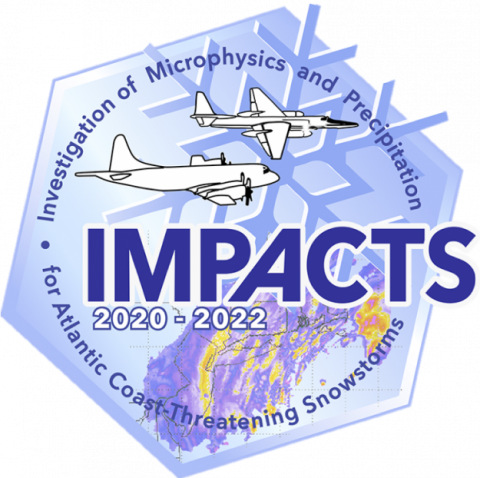 The NASA Global Hydrology Resource Center (GHRC) DAAC published the Automated Surface Observing Systems (ASOS) IMPACTS dataset. This dataset consists of a variety of ground-based observations during the Investigation of Microphysics and Precipitation for Atlantic Coast-Threatening Snowstorms (IMPACTS) field campaign. IMPACTS was a three-year sequence of winter season deployments conducted to study snowstorms over the U.S Atlantic coast. IMPACTS aimed to (1) Provide observations critical to understanding the mechanisms of snowband formation, organization, and evolution; (2) Examine how the microphysical characteristics...
The NASA Global Hydrology Resource Center (GHRC) DAAC published the Automated Surface Observing Systems (ASOS) IMPACTS dataset. This dataset consists of a variety of ground-based observations during the Investigation of Microphysics and Precipitation for Atlantic Coast-Threatening Snowstorms (IMPACTS) field campaign. IMPACTS was a three-year sequence of winter season deployments conducted to study snowstorms over the U.S Atlantic coast. IMPACTS aimed to (1) Provide observations critical to understanding the mechanisms of snowband formation, organization, and evolution; (2) Examine how the microphysical characteristics... 11/30/2020 - 12:48
 The NASA Global Hydrology Resource Center (GHRC) DAAC published the Turbulent Air Motion Measurement System (TAMMS) IMPACTS dataset. This dataset consists of wind speed, wind direction, and cross wind speed measurements from the TAMMS instrument onboard the NASA P-3 aircraft during the Investigation of Microphysics and Precipitation for Atlantic Coast-Threatening Snowstorms (IMPACTS) field campaign. IMPACTS was a three-year sequence of winter season deployments conducted to study snowstorms over the U.S Atlantic Coast (2020-2022). The campaign aimed to (1) Provide observations critical to understanding the mechanisms of...
The NASA Global Hydrology Resource Center (GHRC) DAAC published the Turbulent Air Motion Measurement System (TAMMS) IMPACTS dataset. This dataset consists of wind speed, wind direction, and cross wind speed measurements from the TAMMS instrument onboard the NASA P-3 aircraft during the Investigation of Microphysics and Precipitation for Atlantic Coast-Threatening Snowstorms (IMPACTS) field campaign. IMPACTS was a three-year sequence of winter season deployments conducted to study snowstorms over the U.S Atlantic Coast (2020-2022). The campaign aimed to (1) Provide observations critical to understanding the mechanisms of... 11/30/2020 - 12:44
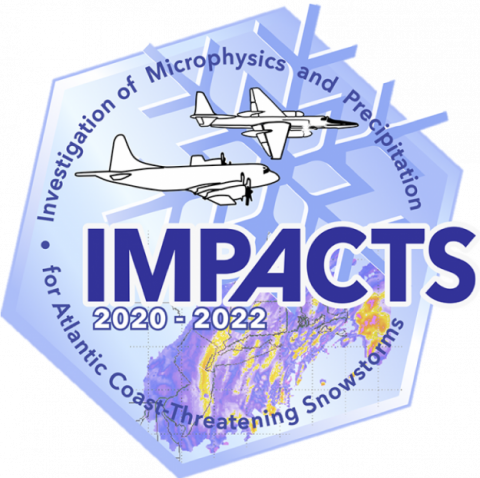 The NASA Global Hydrology Resource Center (GHRC) DAAC published the P-3 Meteorological and Navigation Data IMPACTS dataset. This dataset is a subset of airborne measurements that include GPS positioning and trajectory data, aircraft orientation, and atmospheric state measurements of temperature, pressure, water vapor, and horizontal winds. These measurements were taken from the NASA P-3 aircraft during the Investigation of Microphysics and Precipitation for Atlantic Coast-Threatening Snowstorms (IMPACTS) campaign. Funded by NASA’s Earth Venture program, IMPACTS is the first comprehensive study of East Coast snowstorms...
The NASA Global Hydrology Resource Center (GHRC) DAAC published the P-3 Meteorological and Navigation Data IMPACTS dataset. This dataset is a subset of airborne measurements that include GPS positioning and trajectory data, aircraft orientation, and atmospheric state measurements of temperature, pressure, water vapor, and horizontal winds. These measurements were taken from the NASA P-3 aircraft during the Investigation of Microphysics and Precipitation for Atlantic Coast-Threatening Snowstorms (IMPACTS) campaign. Funded by NASA’s Earth Venture program, IMPACTS is the first comprehensive study of East Coast snowstorms... 11/30/2020 - 12:40
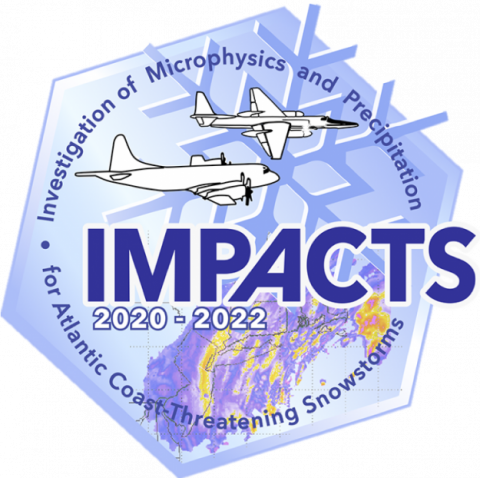 The NASA Global Hydrology Resource Center (GHRC) DAAC published the NASA ER-2 Navigation Data IMPACTS dataset. This dataset contains information recorded by the on-board navigation and data collection systems of the NASA ER-2 high-altitude research aircraft. In addition to typical navigation data (e.g., date, time, latitude/longitude, and altitude) it also contains outside meteorological parameters such as wind speed, wind direction, and temperature. These data were collected during the Investigation of Microphysics and Precipitation for Atlantic Coast-Threatening Snowstorms (IMPACTS) field campaign, a three-year...
The NASA Global Hydrology Resource Center (GHRC) DAAC published the NASA ER-2 Navigation Data IMPACTS dataset. This dataset contains information recorded by the on-board navigation and data collection systems of the NASA ER-2 high-altitude research aircraft. In addition to typical navigation data (e.g., date, time, latitude/longitude, and altitude) it also contains outside meteorological parameters such as wind speed, wind direction, and temperature. These data were collected during the Investigation of Microphysics and Precipitation for Atlantic Coast-Threatening Snowstorms (IMPACTS) field campaign, a three-year... 11/17/2020 - 14:22
 The NASA Global Hydrology Resource Center (GHRC) DAAC published the SeaFlux Data Products. This dataset consists of estimates of ocean surface latent and sensible heat fluxes, 2m and 10m wind speed, 2m and 10m air temperature, 2m and 10m air humidity, and skin sea surface temperature. This data product was created by using the SeaFlux V3 model. These data are available globally from January 1, 1988 through December 31, 2018 in netCDF-4 format.
The NASA Global Hydrology Resource Center (GHRC) DAAC published the SeaFlux Data Products. This dataset consists of estimates of ocean surface latent and sensible heat fluxes, 2m and 10m wind speed, 2m and 10m air temperature, 2m and 10m air humidity, and skin sea surface temperature. This data product was created by using the SeaFlux V3 model. These data are available globally from January 1, 1988 through December 31, 2018 in netCDF-4 format. 11/05/2020 - 10:22
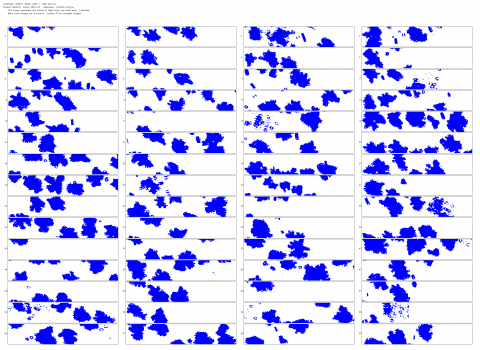 The NASA Global Hydrology Resource Center (GHRC) DAAC published the NCAR Particle Probes IMPACTS dataset. This dataset consists of data collected from five instruments on the NASA P-3 aircraft, the SPEC Hawkeye Cloud Particle Imager (CPI) and Fast Cloud Droplet Probe (FastCDP), the SPEC Two-Dimensional Stereo probe (2D-S), and two SPEC High Volume Precipitation Spectrometers (HVPS3). The 2D-S and HVPS3 are two-dimensional optical array probes which record images of particles that travel through their sampling area. The recorded images are then analyzed to produce particle size...
The NASA Global Hydrology Resource Center (GHRC) DAAC published the NCAR Particle Probes IMPACTS dataset. This dataset consists of data collected from five instruments on the NASA P-3 aircraft, the SPEC Hawkeye Cloud Particle Imager (CPI) and Fast Cloud Droplet Probe (FastCDP), the SPEC Two-Dimensional Stereo probe (2D-S), and two SPEC High Volume Precipitation Spectrometers (HVPS3). The 2D-S and HVPS3 are two-dimensional optical array probes which record images of particles that travel through their sampling area. The recorded images are then analyzed to produce particle size... 11/05/2020 - 10:10
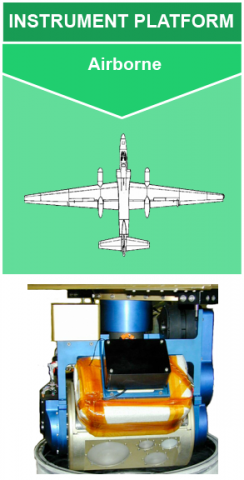 The NASA Global Hydrology Resource Center (GHRC) DAAC published the Conical Scanning Millimeter-wave Imaging Radiometer (CoSMIR) IMPACTS dataset. This dataset consists of brightness temperature measurements collected by the Conical Scanning Millimeter-wave Imaging Radiometer (CoSMIR) flown onboard the NASA ER-2 aircraft during the Investigation of Microphysics and Precipitation for Atlantic Coast-Threatening Snowstorms (IMPACTS) field campaign. IMPACTS was a three-year sequence of winter season deployments conducted to study snowstorms over the U.S Atlantic coast. IMPACTS aimed to (1) Provide observations critical to...
The NASA Global Hydrology Resource Center (GHRC) DAAC published the Conical Scanning Millimeter-wave Imaging Radiometer (CoSMIR) IMPACTS dataset. This dataset consists of brightness temperature measurements collected by the Conical Scanning Millimeter-wave Imaging Radiometer (CoSMIR) flown onboard the NASA ER-2 aircraft during the Investigation of Microphysics and Precipitation for Atlantic Coast-Threatening Snowstorms (IMPACTS) field campaign. IMPACTS was a three-year sequence of winter season deployments conducted to study snowstorms over the U.S Atlantic coast. IMPACTS aimed to (1) Provide observations critical to... 11/05/2020 - 09:56
 The NASA Global Hydrology Resource Center (GHRC) DAAC published the Cloud Physics LiDAR (CPL) IMPACTS dataset. This dataset consists of backscatter coefficient, lidar depolarization ratio, layer top/base height, layer type, particulate extinction coefficient, ice water content, and layer/cumulative optical depth data collected from the Cloud Physics LiDAR (CPL) onboard the NASA ER-2 high-altitude research aircraft in support of the Investigation of Microphysics and Precipitation for Atlantic Coast-Threatening Snowstorms (IMPACTS) field campaign. IMPACTS was a three-year sequence of winter season deployments conducted to...
The NASA Global Hydrology Resource Center (GHRC) DAAC published the Cloud Physics LiDAR (CPL) IMPACTS dataset. This dataset consists of backscatter coefficient, lidar depolarization ratio, layer top/base height, layer type, particulate extinction coefficient, ice water content, and layer/cumulative optical depth data collected from the Cloud Physics LiDAR (CPL) onboard the NASA ER-2 high-altitude research aircraft in support of the Investigation of Microphysics and Precipitation for Atlantic Coast-Threatening Snowstorms (IMPACTS) field campaign. IMPACTS was a three-year sequence of winter season deployments conducted to... 10/14/2020 - 08:33
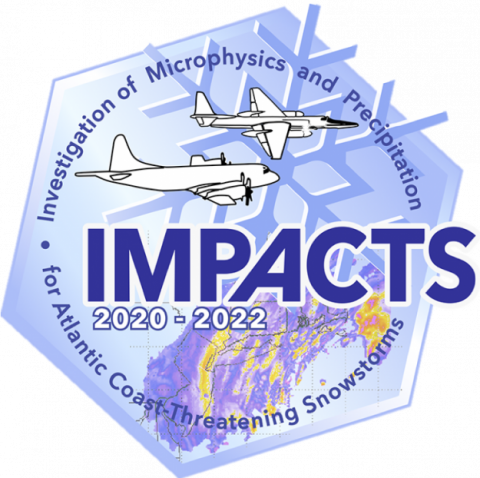 The NASA Global Hydrology Resource Center (GHRC) DAAC published the SBU Parsivel IMPACTS dataset. This dataset consists of precipitation data collected by the Parsivel disdrometer in support of the Investigation of Microphysics and Precipitation for Atlantic Coast-Threatening Snowstorms (IMPACTS) field campaign. IMPACTS was a three-year sequence of winter season deployments conducted to study snowstorms over the U.S Atlantic Coast (2020-2022). The campaign aimed to (1) Provide observations critical to understanding the mechanisms of snowband formation, organization, and evolution; (2) Examine how the microphysical...
The NASA Global Hydrology Resource Center (GHRC) DAAC published the SBU Parsivel IMPACTS dataset. This dataset consists of precipitation data collected by the Parsivel disdrometer in support of the Investigation of Microphysics and Precipitation for Atlantic Coast-Threatening Snowstorms (IMPACTS) field campaign. IMPACTS was a three-year sequence of winter season deployments conducted to study snowstorms over the U.S Atlantic Coast (2020-2022). The campaign aimed to (1) Provide observations critical to understanding the mechanisms of snowband formation, organization, and evolution; (2) Examine how the microphysical...





